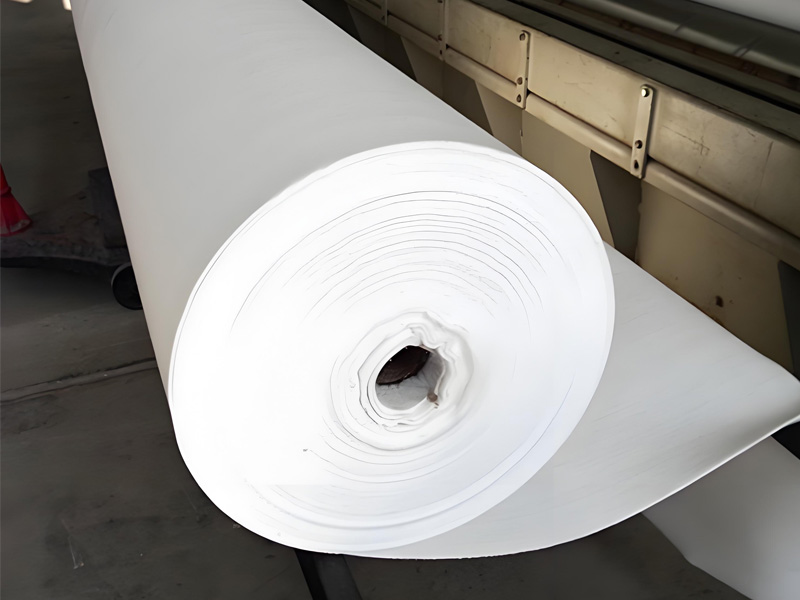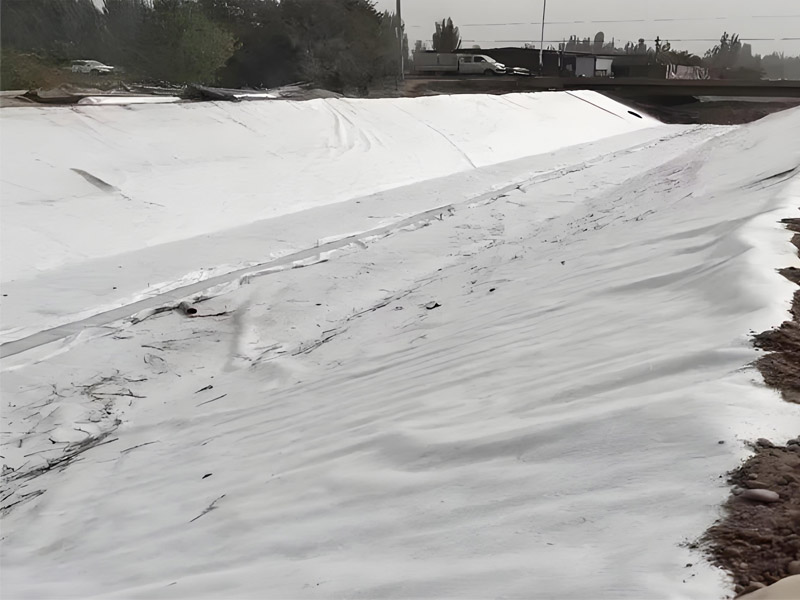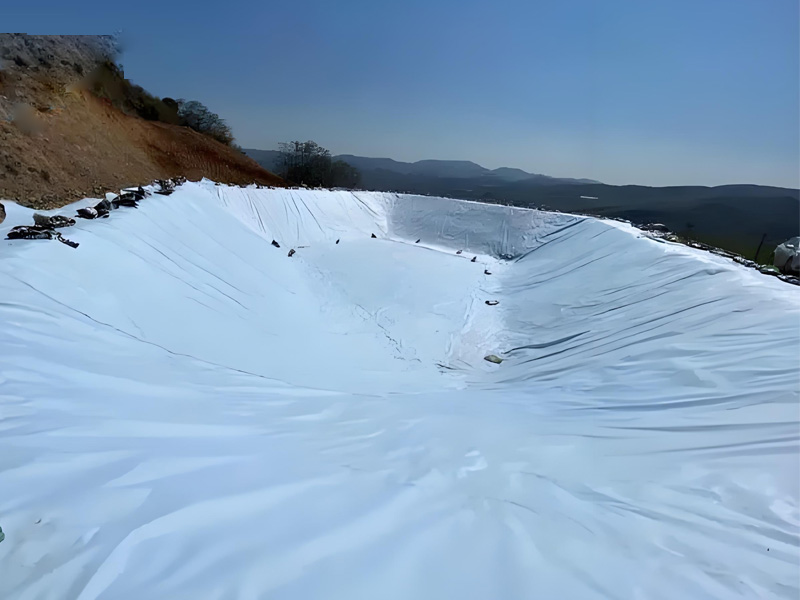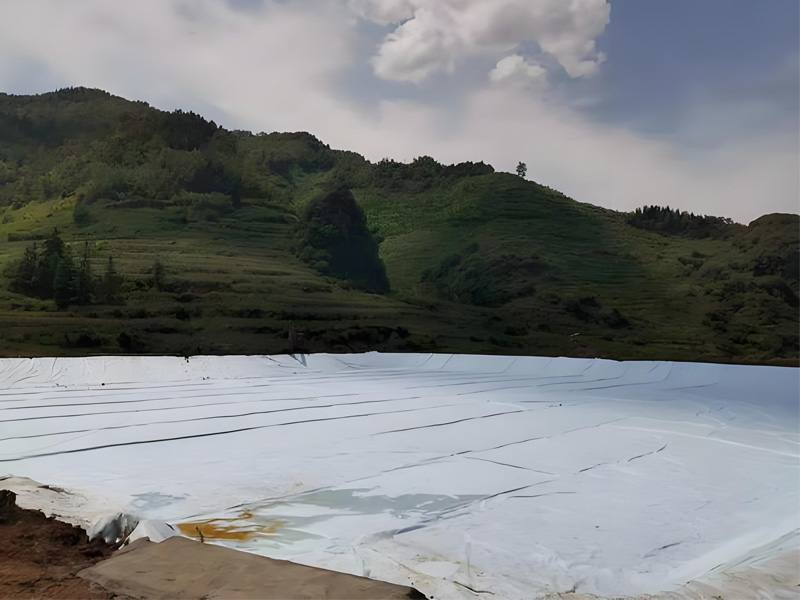Choosing the right geotextile fabric for use under gravel is crucial to ensuring the stability and longevity of your construction project. Geotextiles, also known as geotextile fabric under gravel, are permeable materials used in civil engineering applications for separation, filtration, reinforcement, or protection. BPM Geotextile is a leading manufacturer in the geotextile industry, known for its high quality and high service.When selecting a geotextile for this specific purpose, several factors must be considered to achieve optimal performance.
1. What Is Geotextile Fabric Under Gravel?
Geotextile fabric under gravel is a permeable material used in civil engineering and landscaping applications to enhance the performance and durability of gravel-based projects. It serves several key functions:
- Separation: Geotextile fabrics separate gravel from finer soil layers, preventing them from mixing. This helps maintain the integrity of both materials and ensures proper drainage.
- Filtration: They filter out fine particles while allowing water to pass through, which prevents clogging and ensures efficient water management. This filtration function is crucial for maintaining long-term stability and preventing soil erosion.
- Reinforcement: Geotextiles provide additional strength and support to the gravel layer, reducing the risk of shifting, settling, and cracking. This reinforcement is particularly important in areas with heavy traffic or where the ground is subject to significant loads.
- Protection: These fabrics protect underlying soil from mechanical damage caused by heavy machinery and foot traffic during construction and maintenance activities. They also minimize the risk of soil contamination from chemicals or pollutants present in the gravel.


2. What Applications Are Geotextile Fabric Under Gravel Suitable For?
Geotextile fabrics under gravel are suitable for a wide range of applications across various sectors, particularly in construction, landscaping, and environmental engineering. Here are some common applications:
2.1 Geotextile Fabric Under Gravel – Road Construction
- Base and Sub-base Stabilization: In road construction, geotextile fabrics are used to stabilize the base and sub-base layers beneath asphalt or concrete surfaces. They help distribute loads evenly and prevent the migration of fine particles into the underlying soil.
- Erosion Control: They protect embankments and slopes from erosion due to water flow and traffic.
2.2 Geotextile Fabric Under Gravel – Railway Tracks
- Bed Stabilization: Geotextiles provide a stable bed for railway tracks, reducing maintenance costs and extending the life of the tracks. They also help in preventing settlement and uneven track conditions.
2.3 Geotextile Fabric Under Gravel – Retaining Walls
- Reinforcement and Drainage: In retaining walls, geotextiles reinforce the backfill material and facilitate drainage, reducing hydrostatic pressure behind the wall and preventing failures.
2.4 Sports Fields and Playgrounds
- Drainage Management: For sports fields and playgrounds, geotextile fabrics manage drainage effectively, preventing waterlogging and ensuring proper surface conditions for play and competition.
2.5 Landscaping and Gardens
- Pathway Construction: In landscaping projects, geotextile fabrics are used beneath gravel pathways to separate the gravel from the soil, ensuring proper drainage and stability.
- Garden Beds: They are also used in garden beds to separate soil layers and improve drainage, promoting healthy root growth.
2.6 Construction Sites
- Temporary Roads: On construction sites, geotextile fabrics support temporary access roads made of gravel, providing a stable surface for heavy machinery and materials transport.
2.7 Waste Containment
- Landfill Sites: In landfill sites, geotextiles are used to separate waste from the surrounding soil and control leachate movement, protecting groundwater quality.
3. How To Choose Right Geotextile Fabric Under Gravel?
Choosing the right geotextile fabric for use under gravel is crucial to ensuring the stability and longevity of your construction or landscaping project. Here are the key factors to consider when selecting the appropriate geotextile fabric:
3.1 Material Type
Different materials have varying properties, making them suitable for specific applications:
- Polypropylene (PP): High resistance to chemical degradation and UV radiation; ideal for outdoor use.
- Polyester (PET): Strong and durable, suitable for high-stress applications like road bases and retaining walls.
- Polyethylene (PE): Good resistance to moisture and chemicals; often used in environments where these conditions are prevalent.
3.2 Permeability
Ensure the geotextile allows adequate water flow while preventing soil and fine particles from passing through:
- High Permeability: For applications requiring efficient drainage, such as sports fields.
- Low Permeability: Where fine particle migration needs to be minimized, such as in separating layers with different soil types.
3.3 Weight (Mass Per Unit Area)
The required weight depends on the anticipated loads and stresses:
- Lightweight Fabrics: Suitable for less demanding applications, such as temporary access roads.
- Heavyweight Fabrics: Essential for high-stress environments, such as permanent roads and railway tracks.
3.4 Installation Method
Proper installation ensures optimal performance:
- Laying Technique: Ensure the fabric is laid smoothly with minimal wrinkles or folds.
- Overlap: Overlap edges by at least 10-20 cm to prevent gaps.
- Anchoring: Use anchors or adhesives to secure the fabric in place, especially in areas exposed to wind or heavy traffic.
3.5 Environmental Conditions
Consider temperature extremes, exposure to chemicals, and potential biological degradation:
- Temperature Resistance: Choose materials that can withstand the lowest expected temperatures without becoming brittle.
- Chemical Resistance: Select geotextiles resistant to any chemicals present in the environment.
- Durability: Consider how long the material will last without degrading in the specific environmental conditions.
3.6 Application-Specific Requirements
Different projects may have unique requirements:
- Road Construction: Look for high tensile strength and load-bearing capacity.
- Landscaping: Prioritize aesthetic integration and root penetration resistance.
- Erosion Control: Focus on materials with high UV resistance and durability against weathering.


4. Summary
Choosing the right geotextile fabric for use under gravel is crucial to ensuring the success and longevity of your construction or landscaping project. By considering factors such as material type, permeability, weight, installation method, environmental conditions, and application-specific requirements, you can select the optimal geotextile fabric that meets your project’s needs. For high-quality and reliable geotextile solutions, consider BPM Geotextile. With a wide range of products tailored to various applications, BPM Geotextile offers the expertise and experience needed to ensure your project’s success.Any questions, please contact us.





